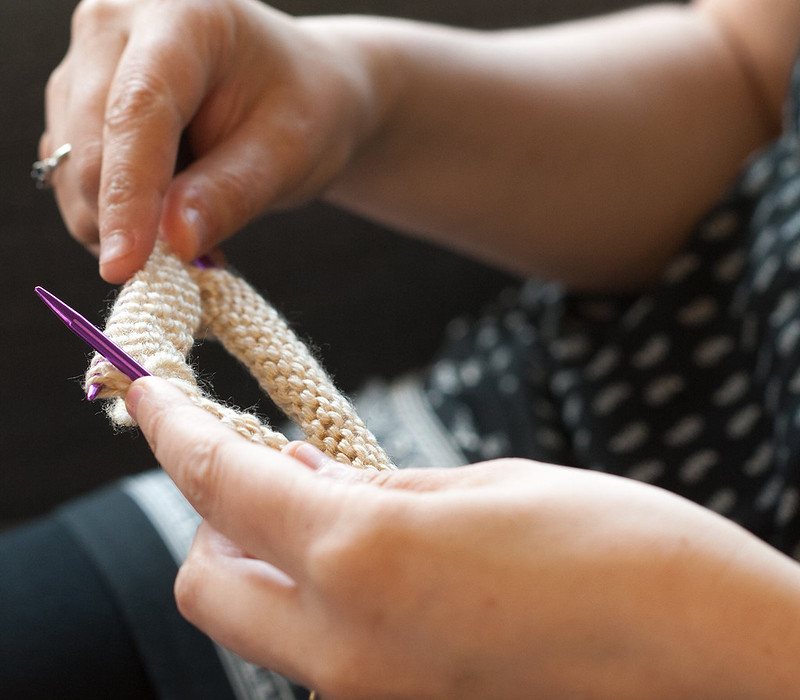Happy belated National Knitting In Public Day.
Hope it’s not too late to tell the story of how knitters have turned their abilities into secret codes to help their countries.
There are two things at work here.
One is the long-running stereotype of an old woman who’s always knitting.
The other is the intricate patterns in a piece of knitting that often only other knitters truly understand.
For example, back in the American Revolution, the colonial troops got an assist from Molly Rinker.
The woman sometimes called “Old Mom” ran a tavern in occupied Philadelphia, but she also pretended to knit on a hilltop.
When she spotted the redcoats moving, she hid a secret message in her yarn and dropped it down into the nearby valley, where it was retrieved by George Washington’s troops.
In situations where they couldn’t hide a paper message in yarn, knitters used the knitting itself as the message.
In the 19th century, knitting spies figured out ways to make their stitching patterns represent the dots and dashes of Morse code.
And during the two world wars, the Allies tracked enemy movements through coded stitching.
Governments eventually caught on to this.
Some banned printed knitting patterns during wartime because they could be used to get secret information to the other side, but they also secretly recruited knitters to spy for them.
And yet, even when knitting patterns couldn’t safely be used, knitters found ways to get the job done.
In World War I, a Madame Levengle lived in an area of France that had been occupied by German forces.
She even had a German field marshal staying in her house!
But she sat knitting next to a front window, where she could see the local railway station.
Anytime she saw something worth reporting to the resistance, she would tap her foot on the floor in a secret code.
Her kids were downstairs, pretending to do their homework.
They listened to Madame’s tapping and wrote out the information that was then passed to the military.
Today in 2020, explorer Vanessa O’Brien made a submersible dive to the spot in the Pacific Ocean known as Challenger Deep, over 10,000 meters down.
Back in 2012, she had climbed to the top of Mount Everest, so she became the first woman to reach the highest spot on Earth and the lowest spot on Earth.
I’m gonna stay here in the middle.
On the Covert Role of Knitting During the French Revolution and World War II (Lit Hub)
Mountaineer Vanessa O’Brien Has Reached The Highest And Lowest Points On Earth

